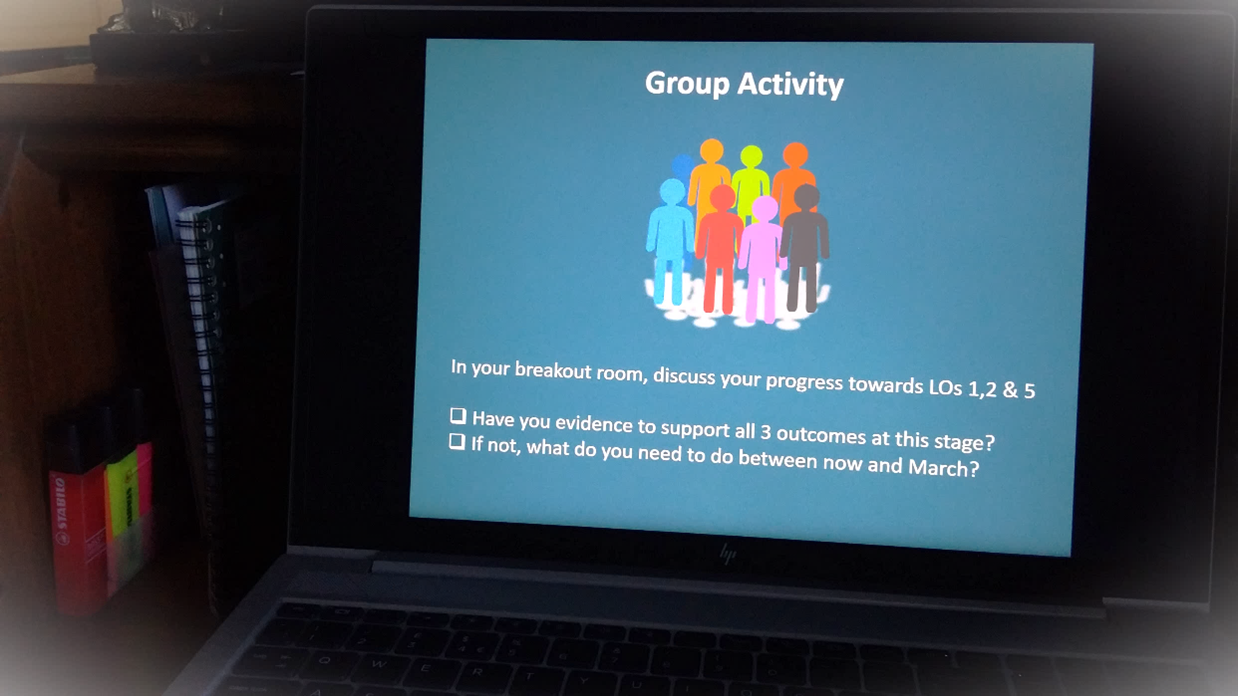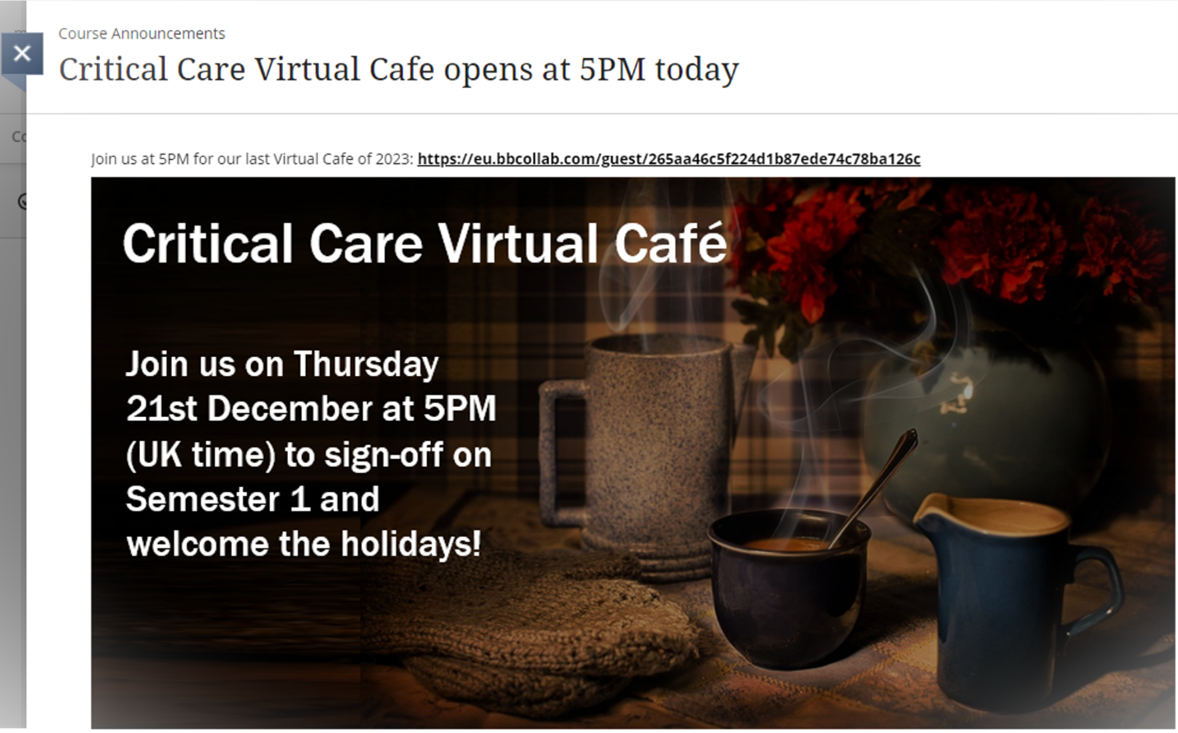
In this engaging blog post, Dr. Paula Smith, Deputy Programme Director for the MSc in Critical Care at The University of Edinburgh, reflects on her innovative strategies for sustaining student motivation through online peer interactions. Drawing from her rich experience in socially interactive educational methodologies, Dr. Smith discusses the pivotal role of active learning seminars in the SLICC (Student-Led Individually Created Course) in Critical Care, particularly tailored for healthcare professionals. Through a thoughtful blend of real-time workshops, structured online interactions, and continuous peer support mechanisms, this post explores how fostering an inclusive and collaborative educational environment can deeply enhance student learning and engagement. This post belongs to the Jan-March Learning & Teaching Enhancement theme: Engaging and Empowering Learning Engaging and Empowering Learning with Technology.
I am immensely grateful to the master’s students who nominated me for CMVM Teacher of the Year, and I thank EUSA for shortlisting me, since it demonstrates that my student-centred approach to teaching has been recognised by those whom I strive to support (Nominations and Awards Blog Post). For the first iteration of the Student-Led Individually Created Course (SLICC) in Critical Care in Academic Year 2023/24, I was incredibly lucky to work with a dedicated group of students, all full-time healthcare professionals, who helped me to form an engaging and inclusive learning environment. Some of their nomination quotes feature in this Teaching Matters blog post.
The 20 credit SLICC provides students with an opportunity to integrate the learning gained from the first two years of the Master’s in Critical Care programme, and apply it to their own healthcare setting by devising, developing, and delivering a piece of work relating to their clinical practice. Using an ePortfolio encompassing defined learning outcomes, students are required to compile evidence to demonstrate their learning and to reflect regularly on their chosen experience. The learning experience culminates in a written Final Reflective Report and an oral presentation of an ePoster.
Engaging and empowering students
The original SLICCs framework is targeted at on-campus, undergraduate students. A challenge for online, postgraduate students enrolled on a SLICC is sustaining motivation over an 8-month period. In my role as course lead and tutor for the online, part-time SLICC in Critical Care, I place emphasis on creating a supportive environment in which students conduct their independent projects. I start by asking about their goals and aspirations since it is essential to have a genuine interest in getting to know each student; when learners have trust in and feel supported by their tutor, they are more likely to engage in the learning process. I find Whitmore’s GROW model helpful in framing such conversations: Goal (what are you looking to achieve?); Reality (what is your current skillset and what barriers could potentially get in your way?); Options (what options are there to achieving your goal?); Will (what actions will you take?) [1]. Thus, SLICC leadership lends itself to a coaching approach as opposed to teaching per se (hopefully, this doesn’t mean that I will have to rescind the aforementioned shortlisting!). Next, I encourage students to learn from each other. By promoting the rich resource that comes from others’ backgrounds and experiences, especially on an international and interprofessional programme like ours, students feel empowered to provide peer-peer support.
From the outset, I thought that it was important to have regular live classes. Over the course of the SLICC, I run monthly workshops to facilitate the sense of a collaborative online community and to overcome problems of isolation and diminished motivation sometimes associated with distance learning. Underpinning the principle of valuing and supporting students, each workshop begins with a check-in on how the attendees are feeling. This usually takes the form of a picture gallery or series of emoticons, where students are asked to select which image best resonates with them, allowing me to read the room and direct the session accordingly.
She makes the effort to check in with each of us to ensure that we’re keeping up and coping with the work and always has a suggestion to help our respective situations- SLICC student 2023/24

The content of the workshops then centres around the assessment milestones for the student-led projects, and I choose intentionally titles with a verb to emphasise the participatory nature of the sessions:
- Reflecting on Experience (Sep)
- Assessing SLICC Outcomes (Oct)
- Evaluating Peer Content (Nov)
- Reviewing Progress (Dec)
- Preparing the Interim Report (Jan)
- Designing an ePoster (Feb)
- Reaching the Finish Line (Mar)
The group activities embedded in the workshops are designed to sustain student motivation, by being both active and contextual. I use the breakout room feature in Blackboard Collaborate Ultra to promote peer support networks and integrate students’ experiences into the webinar content. As well as the synchronous sessions, there is also a course-wide discussion board in Learn and a student WhatsApp group (other messaging apps are available!), where members of the online community can meet.
She really wanted to foster a unity among the group of us despite our being distance learners from different countries and she has succeeded. We chat like old friends despite having never met and we support each other and try to help each other in our respective projects- SLICC student 2023/24

Belonging to a wider online community
I recommend online programmes consider hosting Virtual Cafés. These informal sessions are open to students from across all three years of the Critical Care programme, and I am usually joined by my colleagues from across the programme team (often accompanied by some background jazz music to set the scene!), giving our distance learners opportunities to interact with the wider faculty as well as their peers in a social context: to share views, to celebrate news, and to and remind them that they are part of a larger online community.
She held virtual cafes to check in with us emotionally and how we were coping- SLICC student 2023/24

While the title of this blog post refers to ‘student motivation’, I find that there’s reciprocity in supporting learners on the SLICC course. Students are purposely given autonomy in deciding upon their project/learning experience, what to include in their ePortfolio, and several of the criteria for assessing learning outcomes. This makes for variety in my interactions with an already diverse group of international and interprofessional students, which contributes positively to my own mindset of lifelong learning and collaboration.
Measuring success
In addition to a strong academic performance, positive student feedback, and impactful project outcomes, another measure of the SLICC’s success has been the high attendance levels at its live sessions. Despite a geographically disparate cohort of students and the challenge of selecting a convenient time to meet, the decent numbers joining each month suggest that I have managed to create a learning environment in which students feel confident and comfortable in sharing updates on their progress, and I thank my SLICC students for their enduring engagement.

Class of 2024: International friendships forged through an online community
 Paula Smith
Paula Smith
Dr Paula Smith is Deputy Programme Director for the MSc in Critical Care. She has been a Senior Fellow of the Higher Education Academy since 2017.



Great post, I really enjoyed the insights you shared. The tips are practical and easy to implement. Looking forward to reading more of your content. Keep up the great work.
“This is such an important topic! Online learning can sometimes feel isolating, so fostering meaningful peer interactions is crucial for keeping students engaged and motivated. I really appreciate the strategies mentioned, especially [mention a specific strategy from the post, e.g., group discussions, peer feedback, or collaborative projects]. It would be interesting to explore how different digital tools and platforms can further enhance these interactions. Do you think gamification elements could also play a role in boosting student motivation? Great insights—thanks for sharing.”